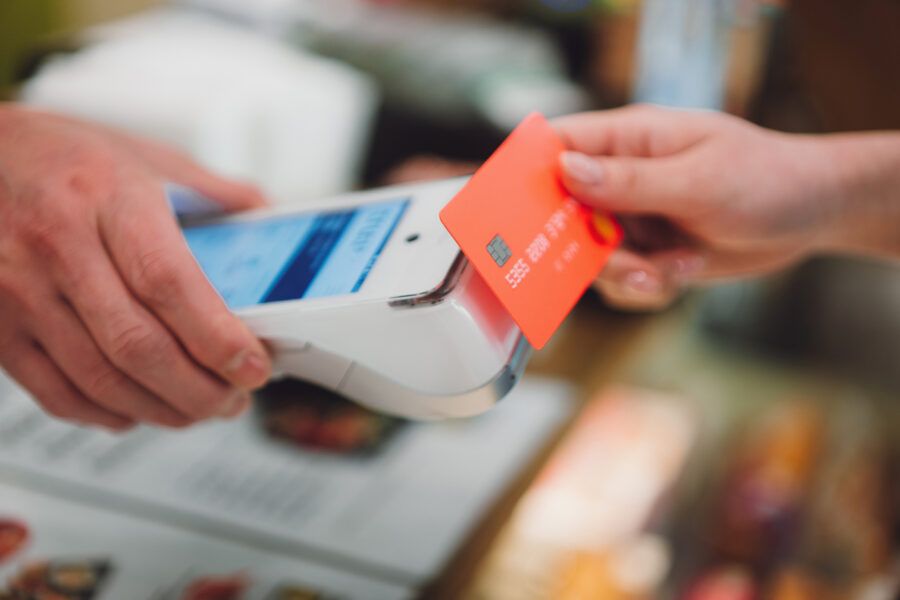In this article:
Card skimming is when a physical device installed on a merchant's card reader is used to steal your card's information. You might encounter these skimming devices at gas station pumps, ATMs and point-of-sale (POS) terminals, and they can steal information from benefits, EBT, debit and credit cards. The criminals who use skimming devices can then sell the stolen card details or create counterfeit cards they can use to make purchases or withdrawals. Here's what to know about card skimming and how to protect yourself.
How Does Card Skimming Work?
Card skimming has been a problem for years, but the precise methods used have evolved over time. As ATM and POS operators develop new ways to catch or block skimmers, the criminals installing them respond with new techniques and skimming devices.
For example, many cards now have an EMV chip that requires you to insert your card rather than swipe the magnetic strip on the back. As chip cards became more popular, however, criminals developed card "shimming" devices that can copy some of the information from your card's chip.
Regardless of the device's name, the basic premise of card skimming is always the same:
- A skimming device steals your card's information. The skimming device may be placed on top of a card reader or inserted inside the card reader slot. Some of these are very small and well hidden, and you might insert or swipe your card without ever realizing they're inside. When you do, the device steals information from the card, such as your name, card number and card expiration date.
- A camera or keypad overlay steals your PIN. A hidden camera is installed near the keyboard or a thin overlay is placed on top of the keypad. These can record the PIN or ZIP code that you enter.
Once someone installs a skimming device, it might stay hidden and steal information for a long time. A FICO report from 2022 found that skimming devices stole information from 185 cards on average. And most of the devices went unnoticed for more than a week.
The criminals who plant skimming devices may periodically return to retrieve the stolen information—sometimes using a wireless connection. They can then sell card numbers online or use them to create a card and withdraw cash from an ATM or make fraudulent purchases.
How to Avoid Card Skimming
You can look for card skimming devices whenever you use your card at an ATM, gas pump or sales terminal. However, you can't rely on detection alone. Sometimes the card skimmers are inside the terminals.
Still, here are a few steps you can take to protect yourself and spot some skimming devices.
- Use the safest payment method available. Tapping your digital wallet or a contactless card can be safer than inserting or swiping your card. If that's not an option, inserting the card's chip is safer than swiping.
- Cover the pad when typing in your PIN. It's not a fool-proof method because a keypad overlay could still record what you type, but covering your hand when you enter your PIN or ZIP code can keep cameras from recording what you type.
- Compare nearby card readers. For example, if you're checking out at a convenience store that has two card readers on the counter, quickly see if the number pads look the same. Even minor differences, such as odd colors or small holes, could indicate the presence of a card skimming device.
- Manipulate the edge of the device. You could try pulling on the card reader or keypad to see if there's a skimming device that moves or comes off.
- Check the security seals at gas pumps. Some gas stations put a special security seal tape on their pumps. You shouldn't use your card if the tape is broken or says void.
In general, using a credit card might be safer than a debit card. Although most credit and debit cards offer zero liability protections if your card's information is stolen, your credit card isn't directly tied to your bank account. As a result, you won't have to deal with the potential hassle of getting your money back if thieves drain your bank account.
You can also try adding alerts to your credit and debit cards—such as an email, text or app notification—every time there's a new transaction. The alerts can help you act quickly if someone uses your card's info to make fraudulent purchases.
What to Do if You're a Victim of Card Skimming
You might not realize that someone has skimmed your card until days or weeks later. But if you notice any unusual transactions on your credit card, bank account or EBT account, contact the financial institution or your state's benefits agency as soon as possible.
Dispute the transactions and inform the organization that your card's information was stolen. In most cases, you won't be responsible for any unauthorized credit or debit card transactions as long as you report the compromised account right away. You also might be able to get stolen food and cash aid benefits refunded.
The card issuer will then close your card and send you a new one. If you were using the card for automatic payments, you might need to update your card's information with those companies to make sure you don't accidentally miss a bill.
Monitor Your Credit for Free
Card skimmers don't collect enough information for the criminals to steal your identity. But monitoring your credit for unexpected inquiries or accounts is also important. These could indicate that someone's using your identity to open fraudulent accounts—and you'll want to shut these down right away.
Experian's free credit monitoring comes with real-time alerts for key changes in your credit report; you also get a free credit score tracker. You have the right to submit disputes to the credit bureaus if you spot any inaccuracies or potential fraud in your credit report.

